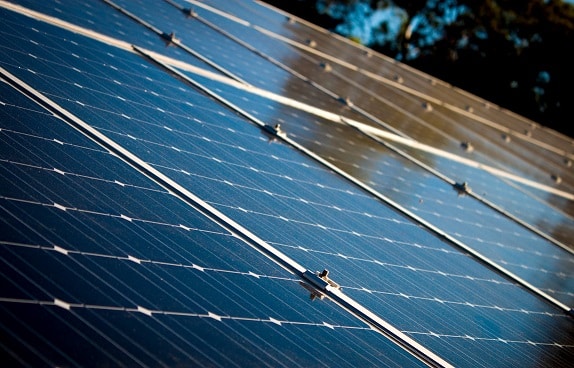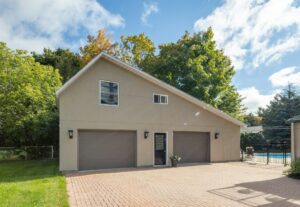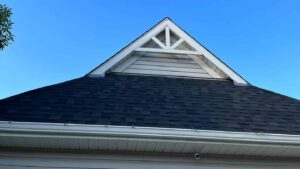
Written by Cameron Martel
In the era of carbon taxes and government-sponsored residential efficiency programs, you’d have to be daft not to consider the impacts that a more efficient home has on not only your pocketbook, but the larger economic and ecological landscape. Canada is undoubtedly a bastion of innovation in the efficiency space, but being a leader in a segment doesn’t mean that the segment itself is thriving.
For years, eco-activists have been decrying Canada’s reliance on Alberta and Saskachewan’s oil and gas industries as an economic driver. The fact that Canada’s energy industry accounts for nearly 7% of our annual GDP notwithstanding, there are valid concerns being raised about the compatibility of continued oil and gas extraction in the wake of our Paris Agreement obligations.
These conversations are taking place on a national stage, but it’s up to the individual to determine if and when they are able to contribute on a smaller level.
In this post, we’re going to look at rooftop solar panels available for Albertan homeowners and assess whether or not they make economic sense.
Table of Contents
ToggleRooftop Solar: Is It Finally Viable?
A common – and historically correct – argument against rooftop solar is that the amount of power generated takes years to pay back the investment. This has been a recurring theme ever since the conversations surrounding rooftop solar really started to take off (which, according to Google Trends, began in 2008 and has been gaining in popularity every year since).
There are a few things to consider when assessing viability:
- Cost of the panels vs. power generated
- Generation capacity of the panels
- Expected life of the panels
Let’s dive a bit deeper into those three things.
Solar Panel Costs, Capacity, & Expected Life
In 2008, if you had $25,000 you could spend on a rooftop solar installation, you’d have been looking at a setup generating around 3 kilowatts. Given that the typical Albertan home uses about 7,200 kWh of electricity every year (source: Energy Efficiency Alberta), solar panels in 2008 were an expensive proposition that were typically purchased more for the statement they made as opposed to the energy savings they provided.
But, as we look towards 2019, the economic landscape is very different… and so is the technology.
Today, that same $25,000 investment can land you a setup that generates 10 kilowatts. On an annual basis, this works out to be somewhere around 1,100 kWh and 1,500 kWh annually. Today, it is completely viable to replace up to 1/3rd of your annual electrical usage via solar (depending on the capacity of your installation).
Given today’s energy rates in Calgary and Edmonton, that means you could be looking at nearly $1,000/year in utility bill savings.
But wait, there’s more: the Alberta government has a rebate program available, offsetting as much as ⅓ of the cost of the panels. That’s significant.
With said rebate program, the time required for rooftop solar to pay for itself is reduced to as few as 9 years. And remember, this technology is getting better every day.
Naysayers may scoff, but residential solar is already paying dividends for some: Effect Home Builders, a custom home builder and renovation contractor based in Edmonton, already has examples of rooftop solar – coupled with other efficiency methods – empowering homes to be entirely net-zero (meaning that they produce more energy per year than they consume).
The practical benefit of a net zero home? Utility bills in the low two-digits every month. Or, in the case of the Belgravia Green (Effect’s net-zero showpiece), several years of surplus power generation with nearly no grid reliance at all.
There’s one point left to address: the expected life of the panels. You would be correct to think that the capability of solar panels decreases over time… but only marginally so. In fact, modern solar panels typically come with a 25-year warranty. By the end of their warrantied life, your panels should be at least 80% as efficient as the day they were installed.
For the eco-minded, or even economically-minded, it’s now economically feasible to have a conversation about rooftop solar. The light at the end of the tunnel (aka, payback) has never been closer. If you intend on staying in your home for 15+ years, rooftop solar may now be a “no-brainer” for those willing to make the investment.
An Additional “Hidden Benefit”
According to Derek Perzylo, owner of Calgary based Big 5 Exteriors (a roofing and eavestrough company), some people opt to place solar panels on their roof for a reason other than their power generation: shingles that rest underneath solar panels have a dramatically longer life compared to shingles exposed to the elements.
Wind, snow, and hail all take their toll on asphalt shingles. Solar panels are designed to endure these events for the duration of their warranty, and in so doing, they shield the shingles underneath them.
Take this with a grain of salt, but don’t dismiss it entirely. Your rooftop panels could wind up saving you on roofing repairs/replacements over the course of their life. That’s a win.
What About Storage Solutions?
We’re almost done here, but before we wrap this article up, there’s one major point to consider: surplus energy storage.
Solar panels don’t generate energy at night, and their generational capacity is reduced fairly meaningfully in the winter months. In addition to those two factors, your home may generate more energy than it needs during the day and allow you to run off-grid for a time, but then relying on grid power once the sun sets.
Residential power storage – the most well-known being the Telsa Powerwall – are good solutions here. However, they should be viewed as a supplementary option as opposed to an all-encompassing one. Here’s why:
- The Tesla Powerwall2 has a 14 kWh capacity, which is about 50% of what the typical Albertan home uses in a day. It’s also about $10,000 – $12,000 to purchase/install.
- Lower-priced competitors to the Powerwall, such as options from LG, ElectrIQ, and Panasonic, all tend to offer less storage than the Powerwall.
- Even with 14 kWh of storage capacity, the Powerwall2 (and comparable options) lack the storage to get you completely off-grid during low-generation days.
All that said, it’s entirely possible to have your rooftop solar setup pair with a battery storage device and run your home off-grid for the majority of your waking hours, especially in the spring/summer and early fall.
Wrapping It All Up: Is Rooftop Solar Worth It?
The answer is, as always, “it depends”. If you’re willing to invest now and see that payback in 9-12 years, then you’ll likely find residential solar attractive. But, if you’re not sure you’ll remain in your current home for that long, you’ll want to think twice and seriously consider that you may not break even on the investment.
Still, residential solar has never been more viable in Alberta… and it’s only going to get better.









